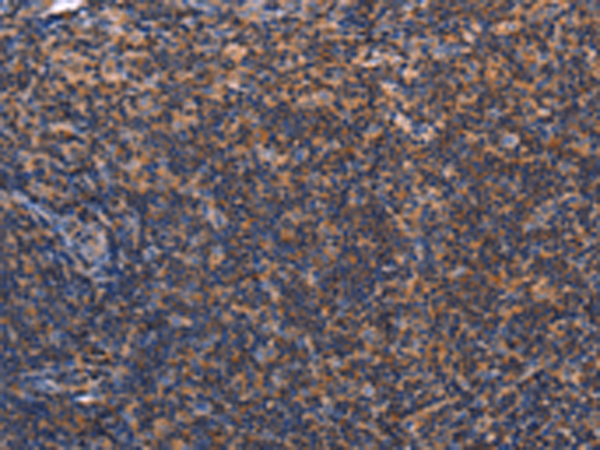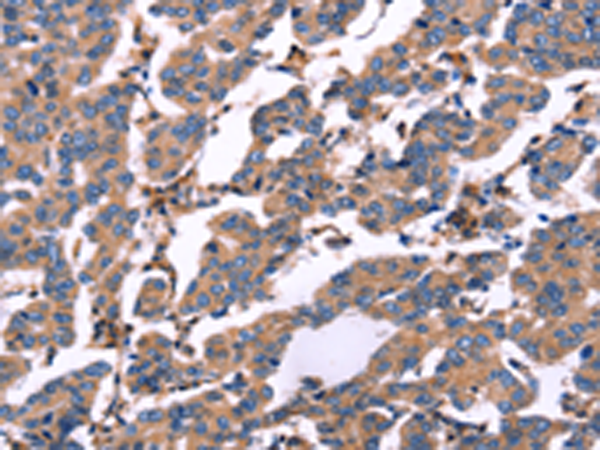


| WB | 1/500-1/2000 | Human,Mouse,Rat |
| IF | 咨询技术 | Human,Mouse,Rat |
| IHC | 1/100-1/300 | Human,Mouse,Rat |
| ICC | 技术咨询 | Human,Mouse,Rat |
| FCM | 咨询技术 | Human,Mouse,Rat |
| Elisa | 1/2000-1/5000 | Human,Mouse,Rat |
| Aliases | DFNB24 |
| WB Predicted band size | 69 kDa |
| Host/Isotype | Rabbit IgG |
| Antibody Type | Primary antibody |
| Storage | Store at 4°C short term. Aliquot and store at -20°C long term. Avoid freeze/thaw cycles. |
| Species Reactivity | Human, Mouse |
| Immunogen | Fusion protein of human RDX |
| Formulation | Purified antibody in PBS with 0.05% sodium azide and 50% glycerol. |
+ +
以下是关于RDX抗体的3篇代表性文献的简要信息整理:
1. **《Production and characterization of monoclonal antibodies specific for hexahydro-1.3.5-trinitro-1.3.5-triazine (RDX)》**
作者:Stanker, L.H., et al.
摘要:研究报道了针对RDX的单克隆抗体的开发与特性分析。通过小鼠免疫和杂交瘤技术获得高特异性抗体,并通过ELISA验证其检测限低至0.1 ng/mL,对RDX类似物交叉反应性低,适用于环境样本的快速检测。
2. **《Immunoassay for detection of explosive compounds using anti-RDX antibodies》**
作者:Bhattacharya, S., et al.
摘要:描述了一种基于抗RDX抗体的竞争性免疫层析检测方法。该抗体通过噬菌体展示技术筛选,可在水体和土壤样本中实现可视化检测,灵敏度达5 ppb,适用于战场污染或工业泄露的现场筛查。
3. **《Development of a fluorescence-based immunosensor for RDX using engineered recombinant antibodies》**
作者:Wang, Y., et al.
摘要:研究利用基因工程改造重组抗RDX抗体,结合荧光标记技术构建生物传感器。系统在10分钟内完成检测,动态范围覆盖0.05-100 ng/mL,展现出在实时监测爆炸物残留中的潜在应用价值。
注:以上内容为示例性整理,实际文献需通过学术数据库(如PubMed、Web of Science)检索确认。若需具体文献DOI或发表年份,可补充说明进一步筛选。
RDX (Research Department eXplosive), also known as cyclotrimethylenetrinitramine, is a nitroamine-based explosive widely used in military and industrial applications. Due to its environmental persistence and toxicity, detecting RDX contamination in soil, water, and biological samples has become critical for environmental monitoring and public health. Traditional analytical methods like chromatography are precise but require specialized equipment and trained personnel, limiting on-site applications.
RDX antibodies, developed through immunochemical techniques, offer a rapid, cost-effective alternative for field-deployable detection. These antibodies are typically produced by immunizing animals (e.g., rabbits or mice) with RDX derivatives conjugated to carrier proteins, as RDX itself is too small to elicit an immune response alone. Monoclonal or polyclonal antibodies generated against RDX exhibit specific binding to the compound or its metabolites, enabling sensitive detection at trace levels (parts-per-billion range).
Applications include enzyme-linked immunosorbent assays (ELISAs), lateral flow immunoassays, and biosensors for real-time monitoring. Challenges remain in minimizing cross-reactivity with structurally similar compounds like HMX or degradation products. Recent advances in recombinant antibody engineering and nanotechnology-enhanced platforms aim to improve specificity and detection limits. RDX antibodies have become essential tools for environmental agencies, military operations, and forensic investigations to address contamination risks and ensure regulatory compliance.
×